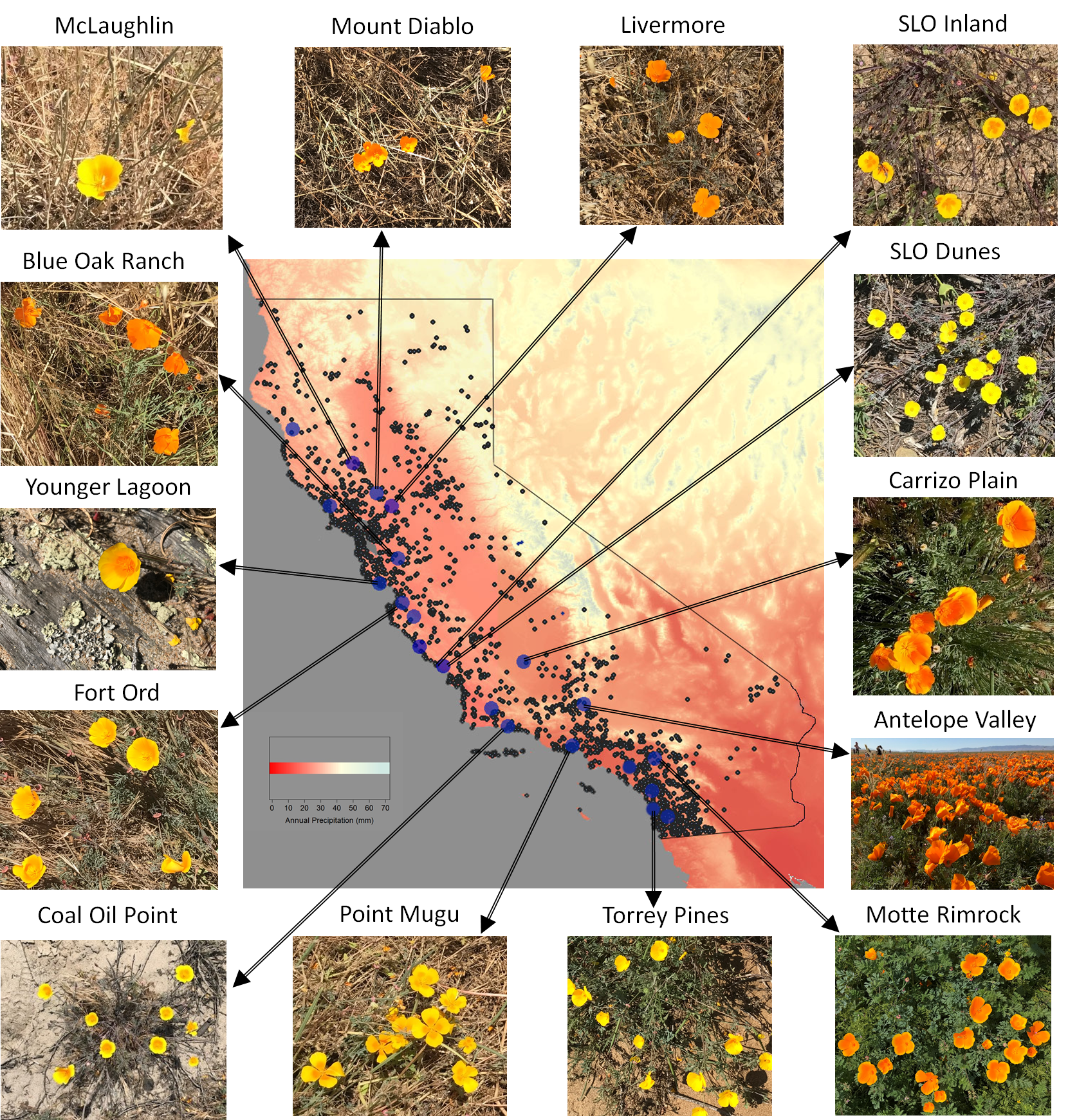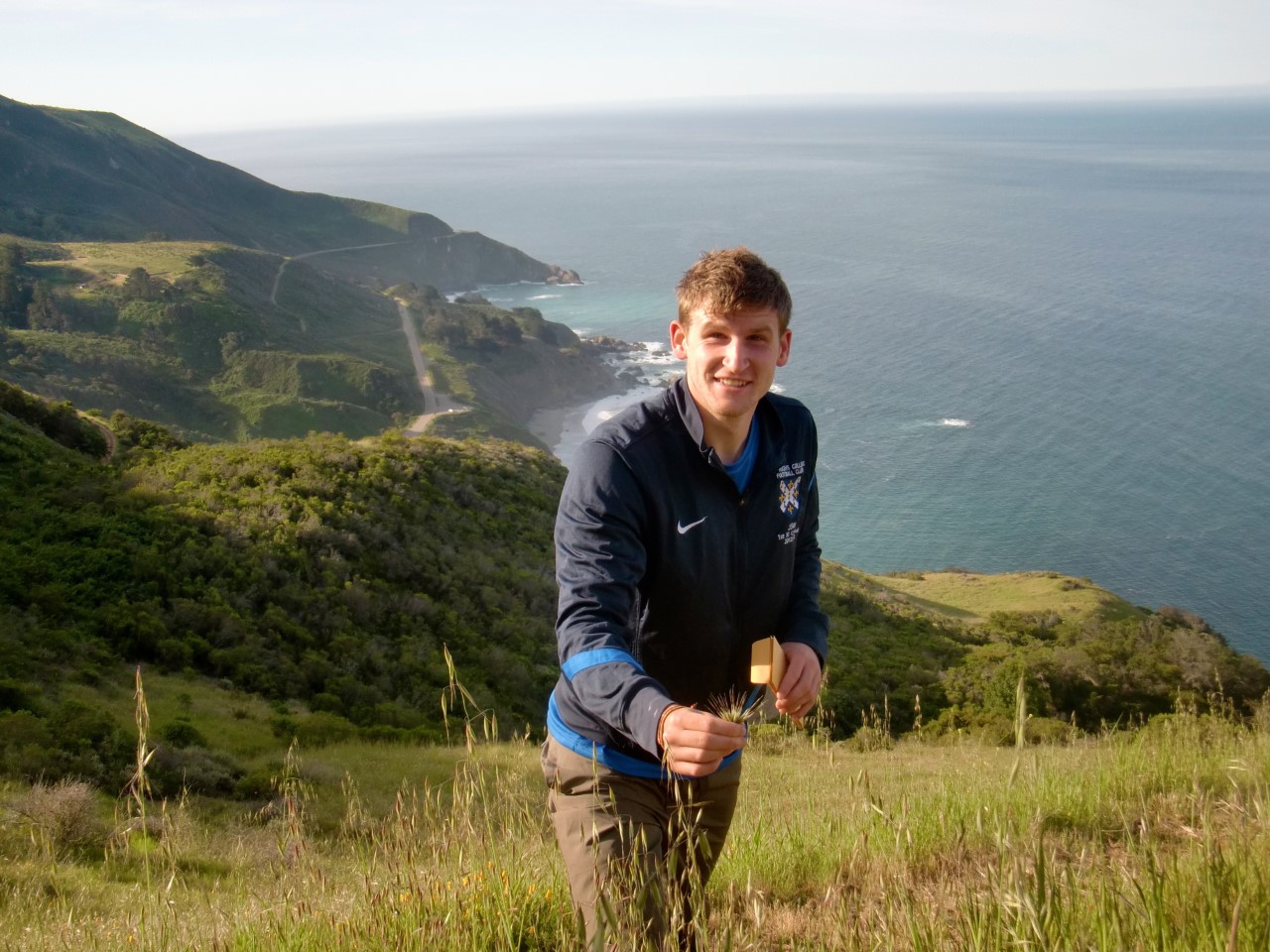
The California Poppy Project
California poppy (Eschscholzia californica) is the state flower, and an iconic species known for its superblooms. The range of this species spans wide climatic gradients, and variations among the populations likely reflect a history of past selection in response to the environment. Our work has found that populations from southern, more arid sites are more likely to be annual, flower faster and are more drought tolerant, compared with the northern populations. We are currently performing experimental crosses to evaluate whether some areas of the species range have higher potential to adapt to climate change, and whether assisted gene flow would help northern populations adapt to long-term drought. We are working with collaborators to parameterize a species distribution model incorporating the clinal variation we observed across the species range. This work is funded by a Gordan H. Sato Endowed Faculty Fellowship, and the California Conservation Genomics Project, and a grant from the National Science Foundation (IOS-2307791).
Community-engaged science to promote climate change resilience
Our lab is involved with community-engaged science through partnerships with Climate Science Alliance (CSA) and UCSD Natural Reserve System. We aim to enhance the climate change resilience of plants and ecosystems at the urban-wildland interface, and engage with community groups that have long-standing experience in managing these systems, including local indigenous peoples. The UC Kendall Frost Marsh Reserve is located on traditional lands of the Kumeyaay Nation, and on this site we are documenting a decade-long effort to restore the upland and transition-zone native plant habitats, including adding culturally important plants to the Kumeyaay. CSA and Ana Gloria (Martha) Rodriquez, founder of Tipey Joa Native Warriors, created trail signage with the names of common plants in the restoration. These include names in Kumeyaay, English, Spanish, and the Latin scientific name, along with a QR code link to hear the Kumeyaay pronunciation of the names. Hundreds of community members have engaged with the signs through events such as Love Your Wetlands Day and Kupiihaaw Mataayum (Autumn Gathering). Additional partners include Coastal Defenders, to engage youth in coastal resilience, and Condor Visual Media to document our activities.
Vegetation recovery following wildfire is another significant focus of this work, led by PhD student Karagan Smith. Her work shows that invasive plants can invade following low intensity fires at the urban-wildland interface, highlighting the importance of weed management in post-fire restoration. Karagan has shared her findings at public events such as the Interfaith Exchange, and her perspective on Tribal fire management in this interview. Our community-engaged science work is funded as part of the WUICAN (pronounced “we can”) collaborative, through a UC Climate Action grant from the UC Office of the President.


Phenology and global change
Shifts in timing, or phenology, observed worldwide provide some of the most compelling evidence that species and ecosystems are already responding to global environmental changes. Observational evidence suggests that as global temperatures have risen, both plants and animals have accelerated the timing of their springtime activities. Many projects in the lab have focused on this key functional trait, documenting how shifting plant phenology has consequences for plant performance, community assembly and ecosystem functioning. Our lab has become increasingly interested in the potential for plant species to adapt their phenology to shifting abiotic (i.e. climate change) and biotic (i.e. invasion by exotic species) factors. For instance, work conducted by PhD student José Waterton focused on germination timing in two abundant grasses in California (Stipa pulchra and Bromus diandrus). Clinal variation in germination timing, and the correlated trait of seed dormancy, suggests a history of past selection on these traits in relation to site aridity. He also found that biotic interactions, including competition and herbivory, influence the strength of phenotypic selection on in response to the environment.
Waterton, J. and E.E. Cleland. (2021) Mammalian herbivores weaken selection for early emergence in competition. Evolution Letters doi:10.1002/evl3.222
Waterton, J., Mazer, S.J., Meyer, J.R. and E.E. Cleland. (2020) Trade‐off drives Pareto optimality of within‐ and among‐year emergence timing in response to increasing aridity. Evolutionary Applications, https://doi.org/10.1111/eva.13145

